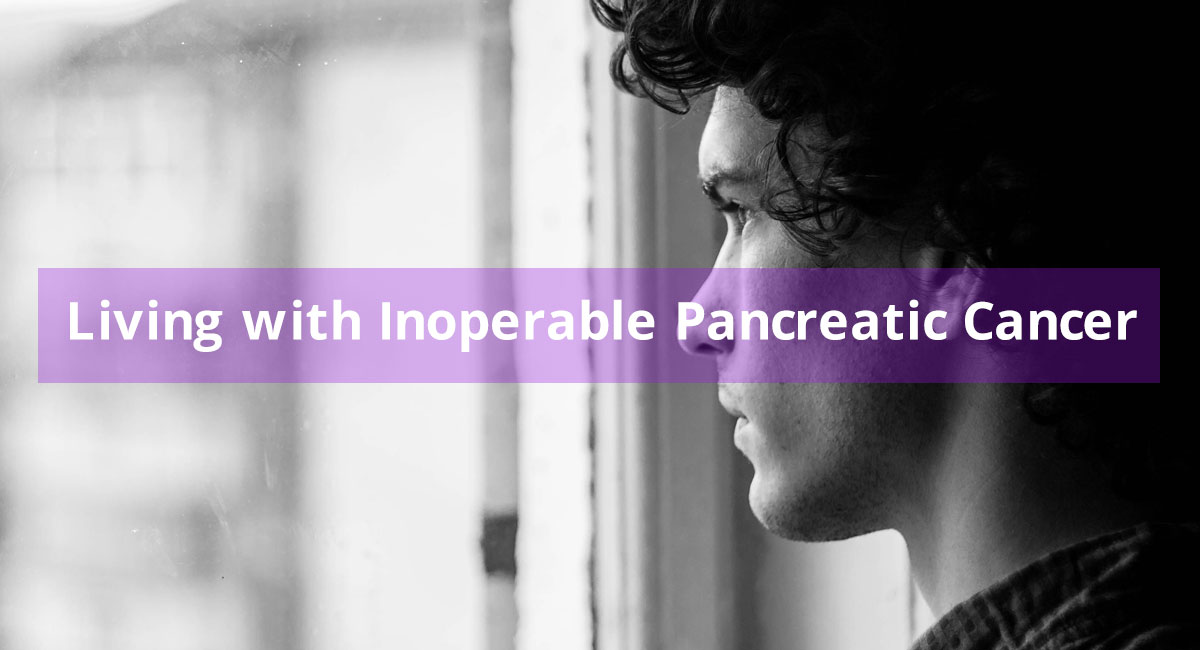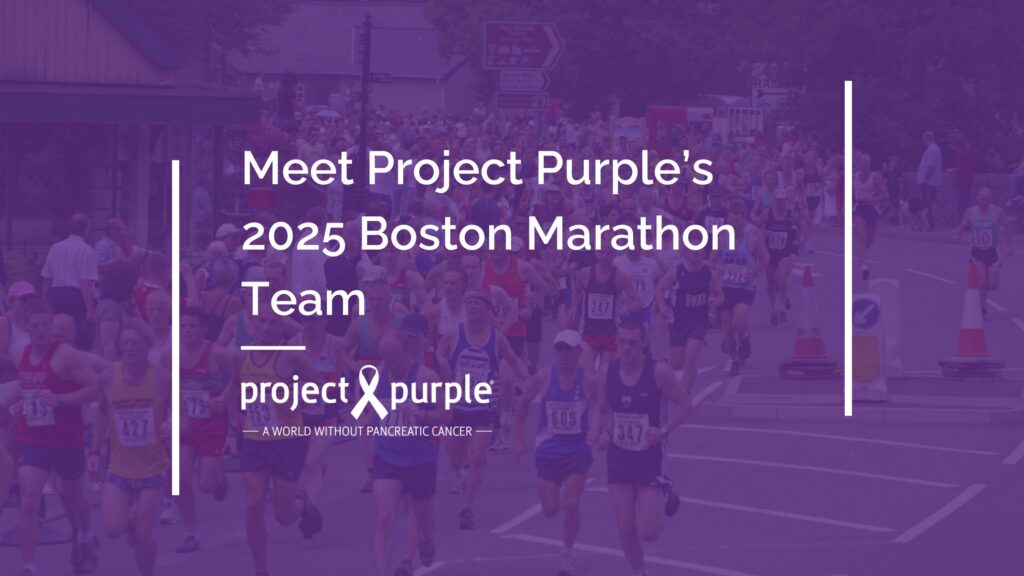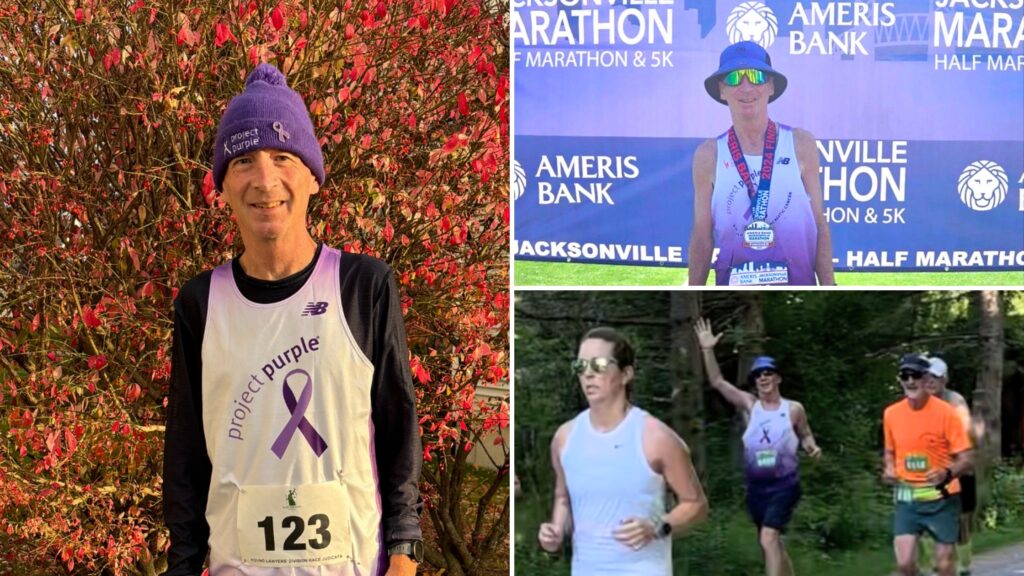 Pancreatic Cancer is a particularly difficult disease to eradicate. One of the most challenging aspects of battling Pancreatic Cancer is that there are currently no methods of early detection. Furthermore, symptoms for Pancreatic Cancer are often nonexistent, vague or they mimic other illnesses. These factors lead to a delay in diagnosis for most patients. While surgery offers the best hope for a cure, Pancreatic Cancer is typically not diagnosed until after it has spread outside of the pancreas and into distant parts of the body. I recently did a question and answer session with several people who were told that they had stage III or stage IV inoperable pancreatic cancer. This is the first in a three blog series. In part one, these fighters talk about what prompted them to seek medical attention, and how they were initially diagnosed.
Pancreatic Cancer is a particularly difficult disease to eradicate. One of the most challenging aspects of battling Pancreatic Cancer is that there are currently no methods of early detection. Furthermore, symptoms for Pancreatic Cancer are often nonexistent, vague or they mimic other illnesses. These factors lead to a delay in diagnosis for most patients. While surgery offers the best hope for a cure, Pancreatic Cancer is typically not diagnosed until after it has spread outside of the pancreas and into distant parts of the body. I recently did a question and answer session with several people who were told that they had stage III or stage IV inoperable pancreatic cancer. This is the first in a three blog series. In part one, these fighters talk about what prompted them to seek medical attention, and how they were initially diagnosed.
ALLYSON
I had debilitating pain in my upper abdomen and left side that prompted me to go to the doctor. I was diagnosed with Pancreatic Cancer following a CT scan and a fine needle biopsy. My first line of treatment was chemo with FOLFIRINOX. I received six infusions and then had a distal pancreatectomy. The surgery was followed up by 28 rounds of radiation. Then it was discovered that I had a recurrence of my cancer.
BECKY
Thanksgiving night in 2013, I had an upset stomach. I assumed it was from overeating, although I didn’t think I had eaten that much. The pain got worse over time. I was very fatigued and had trouble eating for weeks. I also had very itchy rashes which would show up on different parts of my body. In February, I went to my family doctor who ordered a couple of blood tests. A couple of days later, I got a phone call from the doctor telling me to go to the ER immediately because I had pancreatitis. I was checked at the hospital and sent back home with pain medications. I had a couple of bouts with violent vomiting and went back to the ER. My doctor contacted a gastroenterologist who did a scope. He was unable to reach the head of the pancreas. I was losing weight fast and could not even eat a liquid diet, so was put on Total Parenteral Nutrition (TPN) through a PICC line. After being discharged, I was sent to another facility for a different scope, but they were still unable to see the area they needed to see.
After the second scope failed, I was sent to the University of Iowa Hospital because they had a more flexible scope that could reach where they believed there might be a tumor. After the scope, at my first follow-up, I was told that it was not cancer. On my next visit, I was told that it was definitely cancer. The tumor was 4.7 cm. I was referred back to Iowa City for another scan and to consult with a doctor who would do the Whipple surgery if I qualified.
PAUL
I went out with family to a nice restaurant on the south shore of Long Island. After over indulging on a steak, I developed a dull abdominal pain. The pain was still there a day later, so I went to my primary care doctor. My doctor sent me back home. I requested a prescription for a scan. On July 8th, 2012, I had an ultrasound done. The nurse said, “Paul, don’t go. The doctor wants to see you.” He informed me that there was a mass on my pancreas. My body at that moment felt about two inches tall and I felt like I had been hit in the head with a sledge-hammer. Within 24 hours they had run a CT and an MRI. One radiologist said it could be a pseudocyst with septations.
The following week, I saw a highly regarded gastroenterologist doctor. I was rushed into Stony Brook for a fine needle aspiration ERCP. A few days later, I got a call that said the tumor was highly suspicious for cancer. I was scheduled for surgery at Sloan Kettering the following week. Originally I was told I would get a Whipple procedure. Prior to going in, my surgeon called and said that he need to do an extended Whipple.
My surgery was scheduled for August 10, 2012. I had lots of support from family and friends going into the surgery and was gung-ho to get the cancer out. After four hours, I woke up in the recovery room. Family members were standing over me and I knew something had gone incredibly wrong. The surgery was aborted during the procedure because they found a nodule on my liver. The nodule matched the primary tumor, so I had Stage IV pancreatic cancer.
BRUCE
Last June, unusual looking stool prompted me to go into the doctor. She said it was probably caused by a virus. A couple of weeks later, I developed jaundice. I experienced yellowing of the skin, itching, weight loss and dark urine. The doctor thought I had hepatitis. An MRI showed a tumor, which was wrapped around the bile duct. A number of tests, CT scans, biopsies, etc. showed that I had Pancreatic Adenocarcinoma, Stage IV with metastasis to the lungs.
TINA
In 2012, I was diagnosed with Type II diabetes. I weighed 350 pounds, but was losing weight like crazy. In July 2013, I was taken to the emergency room because I was having really bad abdominal pains. I thought it might be my appendix. Imaging showed that my appendix was fine, but there was something on my pancreas. So my battle started. I have no insurance, so my primary doctor had to find doctors who would see me without insurance. I ended up seeing three different doctors and was told they could not do anything for me. I went back to my primary care doctor. At the time, I was working ten-hour days, six days per week but I was in so much pain. I was also having ten to fourteen bowel movements per day. My doctor said I had to take a medical leave from work.
I finally got an appointment at a cancer center in St. Louis, MO. I was relieved thinking I would finally get some answers. I went on medical leave from work on October 3, 2013. My appointment with the specialist was on October 6, 2013. It was at 1:30 on October 6, 2013 that I got the news that would change my life. My husband, mom and aunt were standing by the bed when the doctor came in. He said, “Tina, I am sorry but the test came back. It is cancer.” I just sat there trying to understand. I was groggy from the anesthesia for my scope. My husband and mom were both crying. The ride home was the longest twenty minutes of my life. Calling my family members with the news was the hardest thing I have had to do so far.
GEORGE
It started in December 2012 at my routine physical. My GP noticed that my liver enzymes were a bit off, but nothing else was out of the ordinary. In May of 2013, I saw him again for an overall lack of energy, fatigue and unexplained weight loss. The doctor ordered more blood tests. My liver functions were way off. My doctor did not feel comfortable with what he saw, so he sent me to a gastroenterologist. The GI doctor ordered a scan that showed a tumor on my pancreas. I then had a biopsy that confirmed I had Pancreatic Cancer.
It started in December 2012 at my routine physical. My GP noticed that my liver enzymes were a bit off, but nothing else was out of the ordinary. In May of 2013, I saw him again for an overall lack of energy, fatigue and unexplained weight loss. The doctor ordered more blood tests. My liver functions were way off. My doctor did not feel comfortable with what he saw, so he sent me to a gastroenterologist. The GI doctor ordered a scan that showed a tumor on my pancreas. I then had a biopsy that confirmed I had Pancreatic Cancer.
SYBIL
I developed nausea, vomiting and abdominal pain that radiated to my right shoulder-blade and back. I also had diarrhea. Because of my background in nursing, I initially thought it was my gallbladder. I thought that I had all of the clinical manifestations of gallbladder disease.
My primary care physician and I worked hard to figure out what was going on with me. My PCP believed that it was reflux causing me this discomfort. She placed me on Protonix, and advised me to follow-up with an abdominal ultrasound if the medication did not work. I did just that, and the results ended up showing that there was a cystic mass found on the uncinate process of my pancreas. After my PCP gave me the results of my ultrasound, she scheduled me to have an MRI the following week. I went to work as usual that weekend, but by Sunday night, I was in so much pain that I decided it was time for me to go to the Emergency Department. I never made it to my schedule MRI the following week. I ended up being admitted to the hospital for a week. They drew all kinds of labs which came back normal. I had a HIDA scan done to retest my gallbladder. I also had a repeat ultrasound and a follow-up MRI. The MRI showed the cystic tumor on my pancreas. The admitting GI doctor scheduled an Endoscopic Ultrasound (EUS) with fine needle aspiration. The following day, the GI doctor attempted to perform the EUS, but was unable to complete it because the tumor was encapsulating my arteries. I then had a CT guided biopsy. The pathology showed that it was pancreatic adenocarcinoma. The doctors were in such disbelief because of my age. I was 29 at the time.
In talking with these survivors and fighters, it is apparent that diagnosing Pancreatic Cancer is difficult. The symptoms are often vague and could indicate a number of other health problems. Symptoms also often do not show up until the cancer has progressed. The pancreas lies deep in the body, making imaging and testing a challenge. Patients often go to the doctor repeatedly seeking help before an accurate diagnosis is made. More often than not with Pancreatic Cancer, the cancer has already spread by the time the diagnosis is made. These stories desperately underscore the need for a method of early detection for Pancreatic Cancer. In part two of this series, we will talk with these fighters about their how their cancer is being treated. In part three, we will learn how having been diagnosed with stage III or IV pancreatic cancer has impacted their lives and emotional health.
Read the full Pancreatic Cancer Survivor Series
SURVIVORS TALK EMOTIONS | SURVIVORS TALK SURGERY | SURVIVORS TALK TREATMENTS
Project Purple is an impact-driven organization with a vision of a world without pancreatic cancer. Our mission is to find a cure for pancreatic cancer and improve the lives of patients through support, hope, and compassion.



